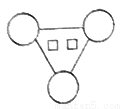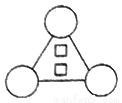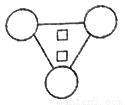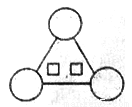题目内容
In 2012, I had just recovered from a serious illness when I received an invitation to a writer’s conference in Orlando, Florida. My family persuaded me that a(n)______might be just what the doctor ordered, so off I______.
Arriving in the Sunshine State was rather tiring, but I______to catch a taxi to my______and settle in. The next morning, I took another______to the shopping centre to buy a few souvenirs.______I went to a cafe to have lunch, but all the tables were______. Then I heard a friendly voice saying, "You can______my table."
I gratefully sat down with the______lady and we had a happy lunch together. As the______drew to a close she asked how long I would be in Orlando. I had already told her that I hadn't______a car, and hadn't realized how______taking taxis would he. After a while she said, "My dear, don't use any more taxis. I'm retired and it would be my pleasure to______you wherever you wish." I told her that I couldn't put her to that______,but she brushed aside my protests(反对). She asked me where I was______and the next morning she was waiting at my apartment at the______time to take me to Disney World. She spent some time with me before leaving me to______alone. At the end of the day, she______to take me back to my accommodation. I______her money but she refused to take any.
I'll never forget that wonderful lady who, through her______, filled my brief holiday in Florida with wonderful memories.
1.A. holiday B. ceremony C. operation D. experiment
2.A. kept B. went C. dropped D. knocked
3.A. intended B. promised C. managed D. deserved
4.A. hospital B. company C. university D. accommodation
5.A. colleague B. passenger C. suitcase D. taxi
6.A. Instead B. First C. Later D. Once
7.A. classified B. occupied C. decorated D. painted
8.A. share B. reserve C. set D. possess
9.A. old B. poor C. innocent D. stubborn
10.A. journey B. meal C. speech D. interview
11.A. donated B. repaired C. hired D. guided
12.A. convenient B. worthwhile C. unfortunate D. expensive
13.A. inspire B. entertain C. call D. drive
14.A. business B. argument C. trouble D. challenge
15.A. working B. staying C. moving D. shopping
16.A. appointed B. limited C. favourite D. regular
17.A. digest B. explore C. perform D. calculate
18.A. forgot B. refused C. returned D. preferred
19.A. sent B. lent C. offered D. owed
20.A. confidence B. dignity C. curiosity D. kindness
 天天向上一本好卷系列答案
天天向上一本好卷系列答案 小学生10分钟应用题系列答案
小学生10分钟应用题系列答案

 B.
B. 
 D.
D. 